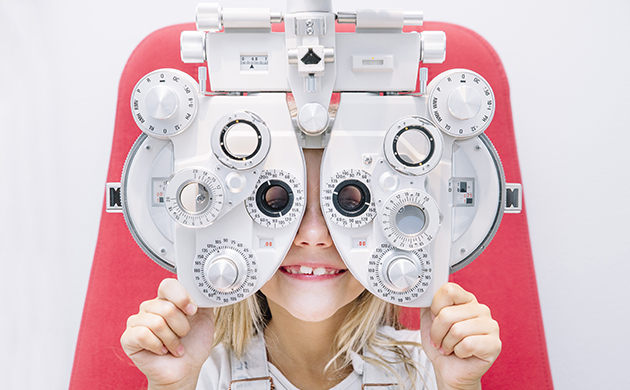Eye allergies are surprisingly common in children; unfortunately, this phenomenon appears to increase. Some kids experience eye allergic reaction symptoms as infants and young children but outgrow them as adults, while others will continue to struggle with them into adulthood. A child with a parent’s history of allergy has an increased risk of developing an eye infection. The risk is even higher when both biological parents have allergies.
An allergy is an overreaction of the body towards something in the environment which it sees as foreign. The foreign substance can also be called an allergen. Eye allergy symptoms can be triggered by the same thing that gives rise to hay fever, such as pollen, pet dander, and dust. Contact lenses and certain medications can also trigger an allergic reaction. Fortunately, eye treatment is available to relieve allergy symptoms such as itchy or watery eyes.
Eye allergy triggers
Outdoor allergens that trigger an allergic reaction include pollens, petrol fumes, and diesel exhaust. While indoor allergens that trigger an allergic reaction include dust mites, pet dander, and cigarette smoke. A child may come in contact with an allergenby breathing, touching, or eating it.
Symptoms of an allergic eye disease
The body of a child who gets an allergy mistakenly identifies the foreign object as a serious problem. In response, a cascade of immune-mediated chemicals and enzymes are released into the body to fight against this intruder. These overreactions can cause a range of eye allergy symptoms, from having mildly itchy eyes to chronic scarring resulting, which may result in loss of vision. Allergic reaction symptoms may only develop during certain seasons, such as spring, when flowers begin to blossom or may be present throughout the year due to continuous exposure to something like dustmites.
Common symptoms of allergic eye disease include:
-
- Red or pink eyes
- Itchy eyes with frequent rubbing
- Dry eyes symptoms
- Watery eyes
- Mild swelling of the eyelid
- Dark discolouration of the skin under the eye.
Severe hay fever symptoms, itchy/runny nose, and watery eyes occur in seasons, depending on the pollen you are allergic to.
Management of an allergic reaction
Once an eye care specialist has made a diagnosis, management protocols need to be followed. One of the simple ways is to avoid the possible triggers. Allergens that contribute to eye allergies are difficult to recognize, but a few general lifestyle habits that can be extremely beneficial:
-
- Keep your windows closed when the pollen season is at its peak. Make your kids stay indoors as much as possible during high pollen periods, usually during the midmorning and early evening, as well as on windy days.
- Avoid using window fans that can draw moulds and pollen inside your house. Instead, incorporate air conditioning in your home and car if possible.
- A humidifier can help control mould when used in damp places.
- Rinse your hands after petting any animal.
The best way to stay away from pollen allergy is to stay indoors when there is a presence of pollen in the air.
In addition to avoiding triggers, you can help improve your child’s allergy symptoms by using medications. Some symptoms can be treated with artificial tears, a decongestant eye drop and oral antihistamines.
Two factors need to be considered while using these medicines. Decongestant eye drops are not made to be used for more than two to three days. Prolonged usage can cause a rebound effect, redness and increased swelling that may persist even after discontinuing the eye drops. Oral antihistamines brought over the counter can cause dry eye and worsen your allergy symptoms.
Prescription eye drops include antihistamines, corticosteroids, nonsteroidal anti-inflammatory drugs, NSAIDs, and mats cell stabilizers. Your eye care specialist will find which treatment combination is appropriate for your child. If a skin allergy accompanies your eye allergy, then medicine for skin allergy itching may also be given to you.
Correct diagnosis is essential
Eye allergies can cause great discomfort and rarely leads to vision loss. But with timely diagnosis and correct treatment, the condition can be well controlled. It is always advised to see an ophthalmologist for the best possible advice.
Eye drops for eye allergy
Your eye care specialist may first suggest the following:
-
- Artificial tears
- Use of a cold cloth on the eyes
- Avoiding allergy triggers
The type of allergy eye drops usually depends on the cause and symptoms of an allergy.
There are several types of allergy eye drops. Not all ophthalmic solutions treat all allergy symptoms. For instance, one that relieves red eyes may not treat the itching.
-
- Antihistamine allergy eyedrops- It is one of the common eyedrops for watery eyes. It helps relieve itching and makes you feel better.
- NSAIDs- They affect certain nerve endings and change how your body makes you feel itchy. It is an effective itchy eyes treatment.
- Decongestant eye drops- These quickly brighten the eyes and reduce eye redness for a short period. This helps reduce the bloodshot appearance of the eyes.
- Mast cell stabilizer eye drops- This help to prevent the production of histamine and other chemical substances by the body during an allergic reaction.
- Multiple action eye drops- A combination of antihistamine and decongestant can help reduce itching, watery eyes, and redness.
Treating Allergic Conjunctivitis (Pink Eye)
Conjunctivitis causes redness, intense itching, tearing, and inflammation of the eyes. Sometimes sneezing and watery nasal discharge also occur. Allergic conjunctivitis treatment includes the use of eye drops that helps to control allergy.
Treating hay fever
Generally, a steroid treatment such as steroid nasal spray is recommended to treat hay fever symptoms. Your healthcare provider may suggest immunotherapy if steroids and other hay fever treatments do not work.



